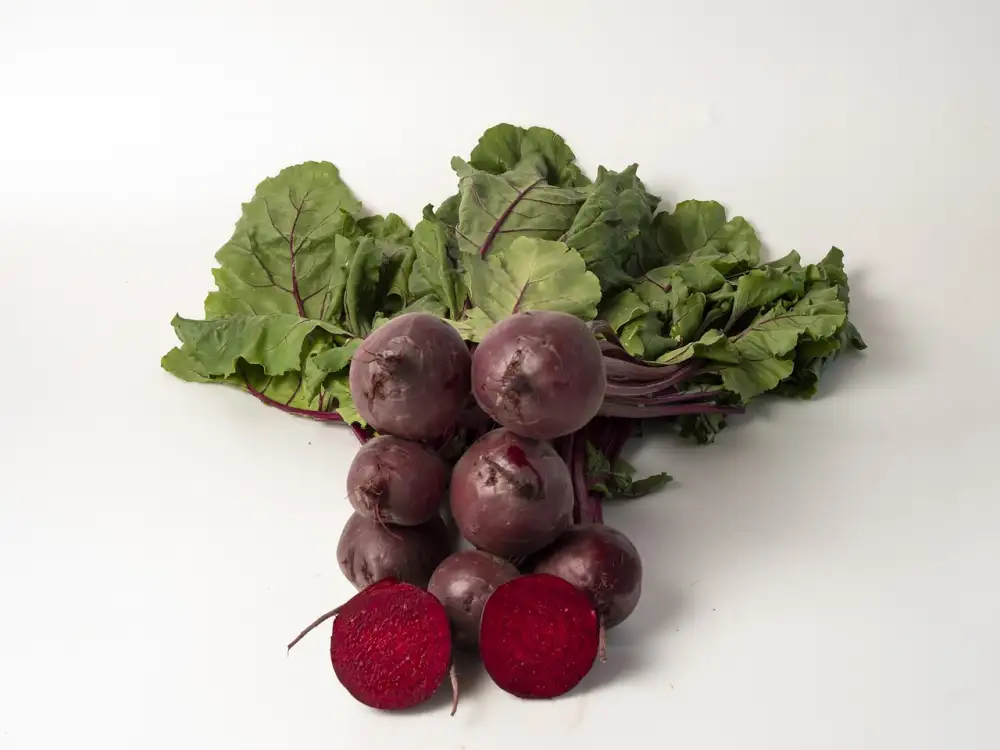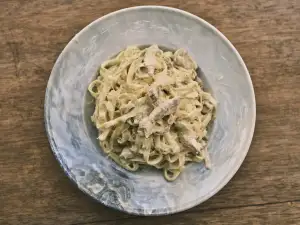Preserve the Perfect Crunch: A Step-by-Step Guide on How to Pickle Beets

- Gather the necessary ingredients for pickling beets
- Prepare the beets for pickling
- Create the pickling brine
- Sterilize the jars for pickling beets
- Pack the beets into the jars
- Pour the pickling brine over the beets
- Seal the jars and store them properly
- Allow the beets to pickle for the recommended time
- Enjoy your homemade pickled beets!
Pickling is a time-honored preservation method that adds a tangy and flavorful twist to various vegetables, including beets. Pickled beets are not only delicious but also offer a delightful crunch that can elevate any dish. Whether you're a seasoned pickler or new to the world of preserving, this step-by-step guide will help you master the art of pickling beets and preserve their perfect crunch for months to come. So let's dive into the wonderful world of pickling and unlock the secrets to creating mouthwatering pickled beets!
Gather the necessary ingredients for pickling beets
To start your pickling adventure, gather the necessary ingredients for pickling beets. Here's what you'll need:
1. Fresh beets: Choose small to medium-sized beets that are firm and free from blemishes.
2. Vinegar: Use white vinegar or apple cider vinegar for a tangy flavor.
3. Water: You'll need water to dilute the vinegar and create the pickling brine.
4. Sugar: Add sweetness to balance out the acidity of the vinegar.
5. Salt: Enhance the flavors and help preserve the beets.
6. Spices (optional): Get creative with spices like cloves, cinnamon sticks, or peppercorns to add depth to your pickled beets.
With these ingredients on hand, you're ready to embark on your beet-pickling journey!
Prepare the beets for pickling
To prepare the beets for pickling, start by washing them thoroughly under cold water to remove any dirt or debris. Trim off the tops and roots of the beets, leaving about an inch of stem intact. This will help prevent the beets from bleeding during the cooking process.
Next, place the beets in a large pot and cover them with water. Bring the water to a boil and cook the beets until they are tender when pierced with a fork, usually around 30-40 minutes depending on their size.
Once cooked, drain the beets and allow them to cool slightly. Once they are cool enough to handle, use your hands or a paper towel to gently rub off the skin. The skin should easily peel away, revealing the vibrant flesh of the beets underneath.
After peeling, trim off any remaining stems or roots and slice or dice the beets according to your preference. For pickling purposes, it is common to slice them into thin rounds or julienne them into matchstick-like strips.
Now that your beets are prepared, you are ready to move on to creating the pickling brine.
Create the pickling brine
To create the perfect pickling brine for your beets, you will need a combination of vinegar, water, sugar, and spices. In a large saucepan, combine equal parts vinegar and water. The amount will depend on how many beets you are pickling. For every cup of liquid, add 1/4 cup of sugar to balance the acidity. Next, add your desired spices such as cloves, cinnamon sticks, or peppercorns to enhance the flavor. Bring the mixture to a boil over medium heat until the sugar has dissolved completely. Stir occasionally to ensure even distribution of flavors. Once the brine is ready, remove it from heat and let it cool slightly before pouring it over the prepared beets in the jars.
Sterilize the jars for pickling beets
Sterilizing the jars is an essential step in the pickling process to ensure that your beets stay fresh and safe to eat. Start by washing the jars and lids with hot soapy water, then rinse them thoroughly. Next, place the jars and lids in a large pot filled with enough water to cover them completely. Bring the water to a boil and let it simmer for 10 minutes. Carefully remove the jars from the pot using tongs and place them upside down on a clean towel to dry. Make sure not to touch the inside of the jars or lids with your hands to maintain their cleanliness. Once dry, they are ready to be filled with delicious pickled beets!
Pack the beets into the jars
After preparing the beets and creating the pickling brine, it's time to pack the beets into the jars. Start by carefully placing the beets into each jar, making sure to leave about 1 inch of headspace at the top. This will allow room for the pickling liquid to cover the beets completely.
Use a spoon or a fork to gently press down on the beets, ensuring that they are tightly packed in the jar. This will help prevent any air bubbles from forming and ensure that all of the beets are evenly coated with the pickling brine.
Continue packing the jars until all of the beets have been used or until you have filled all of your jars. Make sure not to overfill them, as this can cause leakage during storage.
Once all of the jars are filled, wipe off any excess brine or beet juice from the rims of the jars using a clean cloth or paper towel. This will help create a tight seal when you put on the lids.
Now that your beets are packed and ready, it's time to move on to pouring the pickling brine over them.
Pour the pickling brine over the beets
Once you have packed the beets into the sterilized jars, it's time to pour the pickling brine over them. The pickling brine is what gives the beets their tangy and flavorful taste. To make the brine, combine vinegar, water, sugar, salt, and any desired spices in a saucepan. Bring the mixture to a boil, stirring until the sugar and salt are dissolved. Once boiling, remove from heat and let it cool slightly. Then carefully pour the brine over the beets in each jar, making sure they are completely submerged. Leave about 1/2 inch of headspace at the top of each jar to allow for expansion during pickling. The beets should be fully covered by the brine to ensure proper preservation and flavor infusion.
Seal the jars and store them properly
Sealing the jars properly is crucial to ensure the longevity and safety of your pickled beets. After pouring the pickling brine over the beets, wipe the rims of the jars clean to remove any residue. Place the lids on top and screw them tightly. Make sure they are secured but not overly tightened. This will allow air to escape during the pickling process. Store the sealed jars in a cool, dark place away from direct sunlight. The ideal temperature for pickling is between 50-70°F (10-21°C). Properly sealed and stored jars can last up to a year, allowing you to savor the perfect crunch of your homemade pickled beets for months to come.
Allow the beets to pickle for the recommended time
Allowing the beets to pickle for the recommended time is crucial to achieve the perfect flavor and texture. The pickling process typically takes about 1 to 2 weeks, depending on your preference. During this time, the beets will absorb the flavors of the brine and develop a tangy, slightly sweet taste.
It's important to be patient and resist the temptation to open the jars too soon. Allowing the beets to sit undisturbed in a cool, dark place will ensure that they fully pickle and develop their signature crunch.
Remember to periodically check on your pickled beets during this time. Gently shake the jars or give them a little swirl to distribute the flavors evenly. This will help enhance their taste and ensure that every beet is equally delicious.
Once you've reached the recommended pickling time, it's finally time to indulge in your homemade pickled beets! The longer they sit, the more intense their flavor will become. So if you prefer a stronger taste, feel free to extend the pickling period.
Whether you enjoy them as a side dish, add them to salads or sandwiches, or simply snack on them straight from the jar, your homemade pickled beets are sure to impress with their vibrant color and delightful crunch. So sit back, savor each bite, and relish in the satisfaction of preserving nature's bounty in a jar.
Enjoy your homemade pickled beets!
10. Enjoy your homemade pickled beets!
After patiently waiting for the recommended pickling time, it's finally time to savor the fruits of your labor! Open a jar of your homemade pickled beets and prepare to indulge in their tangy and crunchy goodness.
The pickling process has transformed these humble root vegetables into a delightful treat that can be enjoyed in various ways. You can simply enjoy them as a side dish or incorporate them into salads, sandwiches, or even as a topping for burgers.
The vibrant color and unique flavor of the pickled beets will add a burst of excitement to any meal. Their tanginess pairs perfectly with rich meats like roast beef or pork, while their crunchiness adds texture to creamy dishes like goat cheese salads.
Don't forget to share your homemade pickled beets with friends and family. They will surely appreciate the effort you put into preserving this seasonal delight. Whether it's at a summer barbecue or a cozy winter gathering, these pickled beets are sure to impress.
So go ahead, grab a fork, and dig into your jar of homemade pickled beets. Let the flavors dance on your taste buds as you relish in the perfect balance of sweet, tangy, and crunchy. Preserve the perfect crunch and enjoy every bite!
Published: 20. 12. 2023
Category: Recipes



